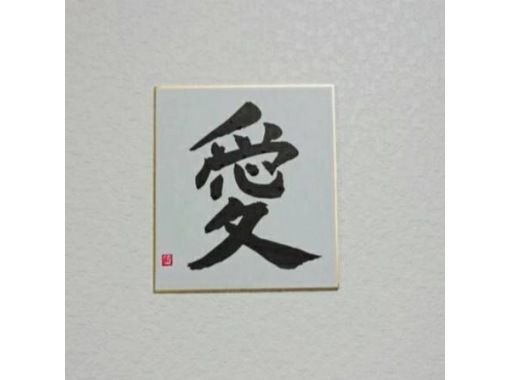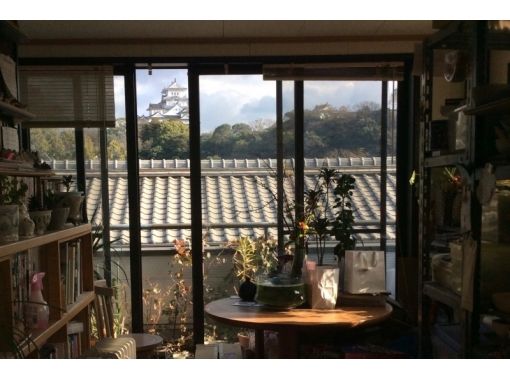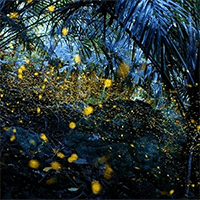- Age 10~Age 100
- 4~5 hours
First, you will observe the making of a Japanese sword (forging) for about an hour. After that, you will create a small knife under the guidance of a swordsmith who has inherited the art of making Japanese swords. The "Small Knife Making Experience" has been running for over 10 years. During that time, hundreds of people have tried it, and we have improved it to give you a better experience of blacksmithing. Everyone is worried, thinking "It looks difficult" or "Can I do it?" but don't worry. I'll be there with you. I'll fully support you! Experience the excitement of seeing your first small knife completed!
- Age 6~Age 100
- 1~2 hours
While touching the charm of the earth, we try to make an original mug only for one person in the world. Japan Active outside Female It is safe because the potter will teach and follow carefully and carefully even for beginners. The finished work is perfect as a gift for loved ones as well as your daily use vessel.
- Age 13~Age 100
- 3~4 hours
- 10:00
With a history of 1400 years, tiles have protected Japanese houses, including shrines and temples. Among them, there are "Onishi" who have the skills of a master craftsman who draws a blueprint in his head while looking at the drawing with his own eyes without using blueprints or molds, and finishes it only with the sense of his fingertips and a handmade spatula. You can make a one-of-a-kind oni tile by learning from an "Onishi" how to make oni tile by hand using "name-do" soil that is more than 2 million years old. Awaji Island is one of the three major production areas of tiles in Japan, and is the number one producer of smoked tiles that shine with "silver". Tiles have a history of more than 1400 years, and tile making has been going on in Awaji Island for more than 400 years. Moreover, the soil used for Awaji tiles is still more than 2 million years old, and the very fine particles of "name-do" are used to create smoked tiles that shine with a beautiful silver color by baking (smoking) them in a kiln. In Japan, onigawara tiles have been used to decorate roofs as a talisman since ancient times. Even today, these onigawara tiles are carefully handcrafted by oni-shi (demon craftsmen) without the use of machines. Normally, you don't get to see onigawara tiles being made, but in this experience, you can watch the onigawara craftsmen's skills up close and make onigawara tiles together. Since this experience is limited to one group, you can make onigawara tiles without worrying about other people. If you have any questions or questions about how to make them, you can ask the onigawara maker at any time, and it is an experience where you can experience traditional techniques in a private atmosphere. [Procedure] 1. Draw a rough sketch of the image (you can also bring a draft with you) 2. Decide on the design of the onigawara tile 3. Together with the onigawara maker, use tile clay (nametsu) to create a rough shape 4. Let it cure (eat lunch (each person) during this time) 5. Finish the fine details using a spatula and your fingertips 6. Completed (you can also take a commemorative photo with the onigawara maker) *The work will then be carefully dried and fired and delivered in about two months. *For lunch, you can enjoy Awaji Island's specialty "Kawara-yaki" at the facility (additional charge required).
- Age 12~Age 90
- Over 6 hours on the day
- 10:00
He has also appeared in various media! This is a full-scale one-day training in traditional Japanese martial arts by Isao Machii, the world's best iaido master, who is also known for his iaido-slash technique using 6mm BB bullets flying at high speed. You can learn about the structure of a sword and the correct way to use it, a wealth of knowledge about samurai and Japanese swords, swordsmanship, body techniques, and all other traditional Japanese martial arts. Genuine traditional Japanese martial arts, not just formal martial arts, use the opponent's strength and toy with small movements. By learning these techniques, you can apply them in your private life, which will completely change your worldview. Dress in training clothes and take this opportunity to experience the authentic samurai culture that dispels the incorrect samurai culture and sword knowledge that is prevalent all over the world. ~Flow of one-day training~9:45 Meet at the site and change clothes. 10:00 First half of training begins 12:00 Lunch break 13:00 Second half of training begins 17:00 End of training Change clothes and disband. This is a full-fledged one-day training course in traditional Japanese martial arts for advanced practitioners of Iai, Kenjutsu, Aikido, etc., both in Japan and overseas, but beginners are also welcome to participate. Instruction will be provided by Isao Machii himself and his top disciples. Most dojos only teach the forms, but here you can learn samurai martial arts that you can really use. *Due to instructions from the Agency for Cultural Affairs and the National Police Agency, this plan does not include instruction on how to test cut with a Japanese sword for anyone other than disciples.
- Age 8~Age 80
- Within 1 hour
- 11:00 / 13:00 / 15:00 / 17:00 / 19:00
A famous sushi chef who used to run a famous sushi restaurant in Osaka has returned to his hometown of Kobe. American Major League Baseball player Yoshida was one of the customers. We will carefully teach you how to make delicious nigiri sushi in a short time. An English guide can be added upon consultation. Very popular with foreign customers.
- Age 12~Age 90
- Over 6 hours on the day
- 09:00
He has also appeared in various media! This is a full-scale one-day training in traditional Japanese martial arts by Isao Machii, the world's best iaido master, who is also known for turning 6mm BB bullets flying at high speed into iaido. You can learn all kinds of traditional Japanese martial arts, such as the structure of a sword and its correct usage, extensive knowledge about samurai and Japanese swords, swordsmanship and martial arts. Genuine traditional Japanese martial arts, not just formal martial arts, apply the opponent's strength and toy with the opponent with small movements. By learning it, you can apply it in your private life, so your worldview will change drastically. Take this opportunity to experience the authentic samurai culture by putting on training clothes and dispelling the incorrect samurai culture and sword knowledge that is prevalent all over the world. *Due to the guidance of the Agency for Cultural Affairs and the National Police Agency, this plan does not provide instruction on test cutting with Japanese swords to anyone other than disciples. ~ Flow of one day training ~ 8:40 Meet at Hankyu "Kawanishi Noseguchi Station" or JR "Kawanishi Ikeda Station" and move to Tada Shrine by free shuttle. 9:00 Arrive at Tada Shrine 9:10 After changing clothes, receive a prayer, and then the first half of the practice will start. 12:00 Lunch break (enjoy a luxurious kaiseki meal) 13:00 Second half of the practice starts 16:00 Practice ends After changing clothes, we will disband.
- Age 6~Age 99
- 1~2 hours
- 13:00
When most people think of Takarazuka, they think of the Takarazuka Revue, but surprisingly, there are not only operas, but also hot springs, memorial halls, and other attractions around Takarazuka Station. After the performance in Takarazuka, why don't you take a walk around the city from a different side with a tour guide? There will surely be new discoveries! ~Time schedule~ 13:00 [Meet in front of the Hankyu Takarazuka station ticket gate] The tour starts here! Although the road is flat, you will walk about 2 kilometers, so please wear comfortable shoes on the day. 13:10 [Birthplace of Carbonated Rice Crackers and Wilkinson Vending Machine] The popular carbonated water "Wilkinson Tansan" when drinking a highball. Did you know that this "Wilkinson Tansan" originated in Takarazuka? In front of Takarazuka Onsen, there is an all-Wilkinson vending machine only here in Japan. 13:20 [Takarazuka Onsen Hotel Wakamizu] During the Showa era, Takarazuka Family Land and hot springs were located along the Muko River, and it was a prosperous resort. There are only a few hotels in operation now, but the atmosphere of the hot spring town of yesteryear still lingers in the air. 13:40 [Takarazuka Ohashi] After passing Takarazuka Onsen, a large tower apartment is currently under construction on the site where the "Takarazuka Hotel", which was founded in 1923, used to be. Please take a look at the town of Takarazuka, which has been renewed with the changing times. The view from Takarazuka Bridge is a great photo spot. The set of Takarazuka Opera, Hankyu Railway and Mukogawa can only be seen here. The sidewalk of Ohashi is also spacious, so you can take pictures slowly. (Every 30 minutes on the hour, the fountain "Big Phoenix" rises from the Muko River, so if you're lucky, you can see it.) 13:55 [Tezuka Osamu Memorial Museum] Did you know that Mr. Osamu Tezuka was actually from Takarazuka? Uka Born in Toyonaka City, Osaka Prefecture in 1928, I lived in Takarazuka City, Hyogo Prefecture from the age of 5, when I was just starting to understand things, to my sensitive boyhood, and until I was about to enter adulthood when I was 24. A museum has been built in Takarazuka to commemorate his achievements, not only as a city where he once lived, but also as a city that gave the underlying theme of all Tezuka manga. 14:40 [Hana no Michi] I think it goes without saying for Takarazuka fans, but it seems that Hana no Michi also means a flower path to the Takarazuka Grand Theater. It is truly a “flower path to the world of dreams”. There are bronze statues of opera performances such as "The Rose of Versailles" and a bronze statue of "Ichizo Kobayashi", the founder of Hankyu Corporation and the Takarazuka Revue. 14:50 [Takarazuka Hotel] There is a newly relocated Takarazuka Hotel in the middle of Hananomichi. In 2009, the Takarazuka Hotel was selected as the official hotel of the Takarazuka Grand Theater with the concept of "continuing your dreams here." Please take a look at the dignified appearance. 15:00 [Arrival at Takarazuka Station]
- Age 7~Age 75
- 1~2 hours
- 11:00
[Walk with the guide and discover! Charm of Awaji ~Izanagi Jingu Course~】Izanagi Jingu, which enshrines two gods, Izanagi no Mikoto and Izanami no Mikoto, is said to be the oldest shrine in Japan, and appears in the Kojiki and Nihonshoki. Experience a special formal worship at the worship hall of Izanagi Jingu. Main course Meet at "Izanagi Jingu-mae" bus stop of "Awajin Awahime Bus" ⇒ Special formal worship at Izanagi Jingu ⇒ Stroll around Izanagi Jingu ⇒ End
- Age 7~Age 75
- 1~2 hours
- 13:15
[Walk with the guide and discover! Charm of Awaji ~Iwaya Course~] ``Eshima'', one of the traditional places of ``Onokoro Island'', which is said to be the first land in Japan, and ``Iwakushi Shrine'', which is said to be the home of Mr. Ebisu of Nishinomiya. and "Ebisu-sama", and the retro townscape of "Iwaya Shopping Street", which prospered as the gateway to Awaji Island, with a guide staff. Main course Meet at "Iwaya Port Terminal" bus stop of "Awagami Awahime Bus" ⇒ Eshima ⇒ Iwakusu Shrine and Ebisu ⇒ Stroll around Iwaya Shopping Street ⇒ End at "Awajishima Tacoste"
- Age 12~Age 80
- 2~3 hours
Would you like to experience home cooking and calligraphy while wearing an authentic kimono? You can choose your favorite kimono and get dressed in a typical Japanese home. Experience and enjoy home-cooked meals while wearing traditional sashes. (We will also give you a brief introduction to soup stock.) In the calligraphy experience, why not write your favorite characters on colored paper or a folding fan to create a commemorative work? Please feel free to join us. We also have a home cooking experience plan wearing a kimono, a home cooking experience and a tea ceremony experience plan wearing a kimono. Please take a look there too.
- Age 12~Age 80
- 2~3 hours
You can choose your favorite kimono and get dressed in a typical Japanese home. Experience and enjoy home-cooked meals while wearing traditional sashes. Would you like to wear a kimono and experience home cooking in a typical Japanese home? Dressing experience Many authentic kimonos are available. Choose your favorite kimono and we will dress you in about 25 minutes per person. Cooking experience You can experience and enjoy home cooking while wearing traditional sashes. (We will also give you a brief introduction to the soup stock.) If the weather is nice, you can wear a kimono and take a walk or take pictures in a scenic park nearby.
- Age 0~Age 100
- 1~2 hours
- 11:00 / 12:00 / 13:00
For making memories of your trip? Or is it in earnest? Experience making soba noodles on a variety of courses according to the Number of participants Using homemade buckwheat flour, a dedicated buckwheat craftsman will carefully guide you. The "soba" you hit yourself is exceptional! You can boil the struck soba at the shop and enjoy it. All tools and materials are available here, so feel free to come empty-handed.
- Age 0~Age 100
- 1~2 hours
- 11:00 / 12:00 / 13:00
For making memories of your trip? Or is it in earnest? Experience making soba noodles on a variety of courses according to the Number of participants Using homemade buckwheat flour, a dedicated buckwheat craftsman will carefully guide you. The "soba" you hit yourself is exceptional! You can boil the struck soba at the shop and enjoy it. All tools and materials are available here, so feel free to come empty-handed.
- Age 12~Age 80
- 2~3 hours
You can choose your favorite kimono and get dressed in a typical Japanese home. Experience and enjoy home-cooked meals while wearing traditional sashes. (We will also provide a brief introduction to the soup stock.) We will also have a tea ceremony experience. (You can choose either tatami or table style) We are looking forward to your participation. You can also try calligraphy as an additional option (separate fee required). In addition, plans for dressing experience, home cooking experience and calligraphy experience. We also have a plan for dressing experience and home cooking experience. Please refer to the information posted for each plan.
- Age 5~Age 90
- 2~3 hours
- 11:30
We will start with the experience of making umami soup stock, which is the foundation of Japanese food. Let's make sushi and tentsuyu using the soup stock. We are preparing the ingredients for Temari sushi, so please make beautiful Temari sushi as you like. You will also experience making crispy tempura. If you know the tips, you can make crispy tempura. Please enjoy the prepared food slowly as lunch. ~ Flow of the day ~ Greetings, explanation of procedure 5 minutes Dashi making / Temari sushi making experience 30 minutes Tentsuyu / Sushi making experience 20 minutes Tempura making experience 20 minutes Tasting / meal 75 minutes
- Age 13~Age 100
- Within 1 hour
Ceramic artist I will teach you carefully with explanation and kindness by a lecturer over 30 years.
- Age 5~Age 100
- 1~2 hours
Ceramic artist I will teach you carefully with explanation and kindness by a lecturer over 30 years.
- Age 8~Age 100
- 1~2 hours
- 11:00 / 12:00 / 13:00
Using homemade buckwheat flour, a dedicated buckwheat craftsman will carefully guide you. Reservation is possible from one person. We offer a variety of courses from beginners to professional training, so please feel free to contact us first.
最近チェックしたプラン
Please wait a moment
![[Hyogo, Aioi] Experience making a small steel sword and observe the making of a Japanese sword (forging)の画像](https://img.activityjapan.com/10/57225/10000005722501_tUytNN5L_3.JPG?version=1744950544)
![[Hyogo Kawanishi] Beginners are welcome! Japan active in outside the Female potters guidance! Hand-made mug making experienceの画像](https://img.activityjapan.com/10/11903/10000001190301_0bwdpeec_3.jpg?version=1574060176)
![[Hyogo, Minami Awaji] Try your hand at making onigawara tiles, a tradition that has continued for over 400 years! Learn from a master craftsman, the oni-shiの画像](https://img.activityjapan.com/10/58778/10000005877801_1Gz5AIDf_3.webp?version=1744699742)
![[Hyogo, Itami City] One-day Shushin-ryu Iaijutsu training! Direct instruction from the world's best Iaijutsu practitioner, Isao Machii!!の画像](https://img.activityjapan.com/10/58530/10000005853001_KM0gtdmE_3.webp?version=1744168143)
![[Hyogo/Kobe] A master of a good sushi restaurant teaches you how to make authentic nigiri sushiの画像](https://img.activityjapan.com/10/52237/10000005223701_WPzK1xI6_3.jpg?version=1702610886)
![[Hyogo, Kawanishi City] Reserve a portion of Tada Shrine, the birthplace of the Genji clan! Learn samurai martial arts directly from the world's best iaido master, Isao Machii, for a full-fledged one-day training session!の画像](https://img.activityjapan.com/10/49462/10000004946201_atFOJjl6_3.jpg?version=1744113183)
![[Hyogo/Takarazuka] A 2-hour walking tour to discover new things in Takarazuka! Also introduced in Bra Tamori! Parents and children and one person are also welcome *Guide includedの画像](https://img.activityjapan.com/10/44053/10000004405301_5u86vXcx_3.png?version=1681196347)
![[Hyogo Prefecture Awaji Island] Experience formal worship at Japan's oldest shrine "Izanagi Jingu" Spend a special time sharpening your sensesの画像](https://img.activityjapan.com/10/46911/10000004691101_AHkjA21Z_3.JPG?version=1678360622)
![[Hyogo Prefecture, Awaji Island] Walk the legendary "Eshima" and the Showa retro fishing port town "Iwaya"の画像](https://img.activityjapan.com/10/46866/10000004686601_atFOJjl6_3.jpg?version=1681448582)


![[Hyogo / Toyooka] Why don't you experience making soba noodles at the home of Izushi soba? Beginner course & meat setの画像](https://img.activityjapan.com/10/37334/10000003733401_IaF35p6h_3.jpg?version=1622088266)
![[Hyogo / Toyooka] Why don't you experience making soba noodles at the home of Izushi soba? Beginner course & tempura setの画像](https://img.activityjapan.com/10/37332/10000003733201_IaF35p6h_3.jpg?version=1622087748)
![[Hyogo Prefecture, Itami] Wearing authentic kimono, home cooking experience & tea ceremony-You can choose your favorite kimono!の画像](https://img.activityjapan.com/10/30555/10000003055501_45q1HsdU_3.jpg?version=1668996841)
![[Hyogo / Himeji] Near Himeji Castle! Vegetables and soup stock while sightseeing! "Temari Sushi ○ Tempura" is also available for vegetarians!の画像](https://img.activityjapan.com/10/26546/10000002654601_Uh3zHSy3_3.JPG?version=1618119874)

![[Hyogo/ Himeji] Ceramics experience "hand-in-hand plan" while watching the castle Small Number of participants, one person and children are welcome!の画像](https://img.activityjapan.com/10/14905/10000001490501_6bZrm7pn_3.jpg?version=1574384732)
![[Hyogo / Toyooka City] Challenge at the home of Izushi soba! Soba making experience (beginner course) Empty-handed regional Use a couponの画像](https://img.activityjapan.com/10/12854/10000001285401_TXfJn0Oe_3.jpg?version=1614914136)







